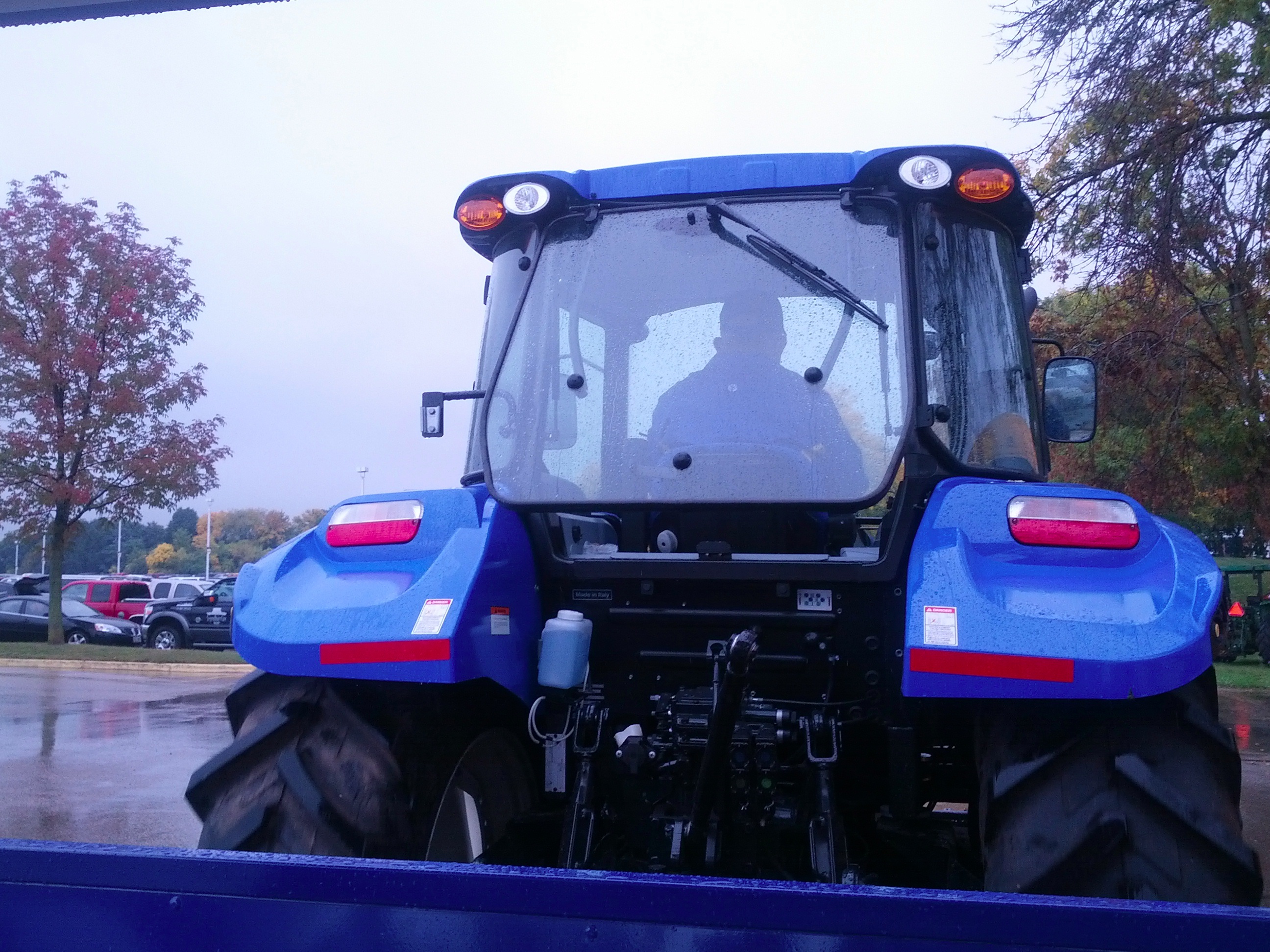When people talk about biotechnology, agriculture is not necessarily top of mind for many people. Getting caught up in your own corner of biotech is easy to do, even when you learn about the billion dollar big data acquisition Monsanto or read that agriculture is expected to be the primary driver behind sales of unmanned aircraft systems in the US.
I’ve lived in Madison for eighteen years and have never been to the World Dairy Expo, which draws 71,788 attendees from 95 countries. Those numbers are higher than my usual cancer conferences, such as American Society of Clinical Oncology Annual Meeting (31,250 attendees in 2012) and the American Association for Cancer Research Annual Meeting (>18,000 attendees in 2012). This year I took the day off of cancer drug development to learn a little bit about the dairy industry.

On my ride through the parking lot on tram pulled by a tractor, I met a Wisconsin farmer who asked what I did. When I told him, he was excited to find a kindred spirit. In addition to traditional farming, his family farm produces specific life science reagents that are used in drug development. My day was already off to a good start. At the “Say What? When to Tell Your Social Media Story” panel, I heard similar concerns about the time it takes to participate in social media but similar opportunities presented by the need to provide story of where food comes from.
But what about the science, the technology? I picked a few themes to tie what I saw at WDE to my experience with biotech and human health.
Measuring activity and health
By now you’ve seen the FitBit, Up and FuelBand, but what about the technology for monitoring cows? There were a couple of examples in the exhibits but the website for the SCR product was the most instructive about the technology and the applications.
The SCR Heatime® HR-LD tag is an RF tag worn by cows. It combines rumination, heat detection and cow identification functionality to give dairy farmers a revolutionary tool to monitor their cows in real-time, 24 hours a day.
The HR-LD tag contains a motion sensor, microprocessor, memory and specially-tuned microphone that detect the cow’s activity and rumination.
Each HR-LD tag collects information and transmits it to the SCR system a few times per hour via RF technology, so the information in the system is up-to-date at all times, no matter where the cow is located.
This unique combination of activity monitoring and rumination monitoring revolutionizes dairy farm management, enabling timely, data-based decision making on heat detection and cow health.
Initial reactions:
- Given my experience with the FitBit, I anticipate the need for technology improvements (including battery life) before many more features can be added to the current human trackers.
- Are there human health conditions where incorporation of a microphone could be beneficial?
Good Bugs & Guts
There is a lot of excitement about the gut microbiome, the microorganisms that live in our intestines, and their impact on our health. One of the first areas of application in human health has been the use of fecal transplants to cure Clostridium difficile infections. Walking through the show, I saw an interesting display system for something called transfaunation – transfer of the microorganisms from one cow to another. How long has transfaunation been used? I tracked down Jonathan Eisen’s blog that references his first exposure to transfaunation back in 2006 with a man who takes care of horses.
Initial reaction:
- What other interesting, effective procedures are out there in dairyland that we might be missing in human health?
Offspring
This year we’ve seen the IPO of OvaScience, a company looking to improve treatments for infertility in humans, and granting of a patent to human genomics company 23andme for a system that would allow parents to select the traits they want their children to have. In dairy, reproductive technologies and trait selection technologies are an established part of the marketplace. Here is some history on artificial insemination in animals. Other approaches, including superovulation and in vitro fertilization are used for specific applications. Sexed semen and semen from well characterized sires are common component of dairy reproductive management strategies. According to the University of Arkansas Division of Agriculture, males account for ~90% of the gene pool in a dairy herd. While there is certainly genetic testing in dairy, the industry uses Expected Progeny Differences (EPD), which is based on factors such as animal weight during life, milk produced, pregnancy and offspring. The use of reproductive technologies and tracking of the animals allows for this type of evaluation.
Initial reaction:
- Is human health learning from the dairy experience in terms of genotype and phenotype?
I enjoyed my field trip into agricultural biotechnology and look forward to the next WDE.



Thanks, Laura, for bringing an awareness of agriculture-related biotech to those who may not have been familiar. As a former scientist and biotech writer now working for the American Societies of Agronomy, Soil Science and Crop Science, I have a great appreciation for the ways that biotech impacts these fields.
Pingback: HDI: Our Very Own Index | HeimDairy
Pingback: The Innovator’s Dilemma in biopharma part 2. Where are the markets for disruptive tech? | Biotech, Baseball, Big Data, Business, Biology...